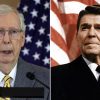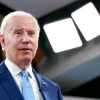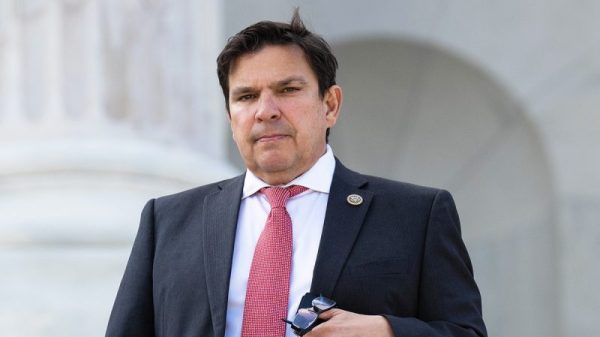The economy grew at a much more rapid pace than expected in the final three months of 2023, as the U.S. easily skirted a recession that many forecasters had thought was inevitable, the Commerce Department reported Thursday.
Gross domestic product, a measure of all the goods and services produced, increased at a 3.3% annualized rate in the fourth quarter of 2023, according to data adjusted seasonally and for inflation.
That compared with the Wall Street consensus estimate for a gain of 2% in the final three months of the year. The third quarter grew at a 4.9% pace.
In addition to the better than expected GDP move, there also was some progress on inflation.
Core prices for personal consumption expenditures, which the Federal Reserve prefers as a longer-term inflation measure, rose 2% for the period, while the headline rate was 1.7%.
On an annual basis, the PCE price index rose 2.7%, down from 5.9% a year ago, while the core figure excluding food and energy posted a 3.2% increase annually, compared with 5.1%.
The two components together added up to “supersonic Goldilocks, because it’s really a strong number yet inflation hasn’t shown up,” said Beth Ann Bovino, chief economist at U.S. Bank. “Everybody wanted to have fun. People bought new cars, a lot of recreation spending as well as taking trips. We’ve been expecting a soft landing for some time. This is just one step in that direction.”
The U.S. economy for all of 2023 accelerated at a 2.5% annualized pace, well ahead of the Wall Street outlook at the beginning of the year for few if any gains and better than the 1.9% increase in 2022.
As had been the case through the year, a strong pace of consumer spending helped drive the expansion. Personal consumption expenditures increased 2.8% for the quarter, down just slightly from the previous period.
State and local government spending also contributed, up 3.7%, as did a 2.5% increase in federal government expenditures. Gross private domestic investment rose 2.1%, another significant factor for the robust quarter.
The chain-weighted price index, which accounts for prices as well as changes in consumer behavior, increased 1.5% for the quarter, down sharply from 3.3% in the previous period and below the Wall Street estimate for a 2.5% acceleration.
“This year has been like Rock ‘Em Sock ‘Em Robots, and the economy is knocking the blocks off the economists, always outperforming,” said Dan North, senior economist with Allianz Trade Americas. Fed Chair Jerome Powell “has got to have a smirk on his face this morning. Again, he’s defying the economists’ predictions with strong growth and inflation clearly coming under control.”
Markets showed only a modest reaction to the report. Stock futures gained slightly while Treasury yields moved lower. Futures markets continued to reflect the likelihood that the Fed will enact its first rate cut in May.
“It was a great report, but you didn’t see the market move much because GDP is backward-looking. It told us what happened in October and November and December,” North said. “It’s great for historical patterns, but it doesn’t really tell us much about where we’re headed.”
In other economic news Thursday, initial jobless claims totaled 214,000, an increase of 25,000 from the previous week and ahead of the estimate for 199,000, according to the Labor Department.
The GDP report wraps up a year in which most economists were almost certain the U.S. would enter at least a shallow recession. Even the Fed had predicted a mild contraction due to banking industry stress last March.
However, a resilient consumer and a powerful labor market helped propel the economy through the year, which also featured an ongoing pullback in manufacturing and a Fed that kept raising interest rates in its battle to bring down inflation.
As the calendar turns a page to a new year, hopes have shifted away from a recession as markets anticipate the Fed will start cutting rates while inflation continues to drift back to its 2% goal.
Concerns remain, however, that the economy faces more challenges ahead.
Some of the worries center around the lagged effects of monetary policy, specifically the 11 interest rate hikes totaling 5.25 percentage points that the Fed approved between March 2022 and July 2023. Conventional economic wisdom is that it can take as long as two years for such policy tightening to make its way through the system, so that could contribute to slowness ahead.
Other angst centers around how long consumers can keep spending as savings dwindle and high-interest debt loads accrue. Finally, there’s the nature of what is driving the boom beyond the consumer: Government deficit spending has been a significant contributor to growth, with the total federal IOU at $34 trillion and counting. The budget deficit has totaled more than half a trillion dollars for the first three months of fiscal 2024.
There also are political worries as the U.S. enters the heart of the presidential election campaign, and geopolitical fears with violence in the Middle East and the continuing bloody Ukraine war.







































